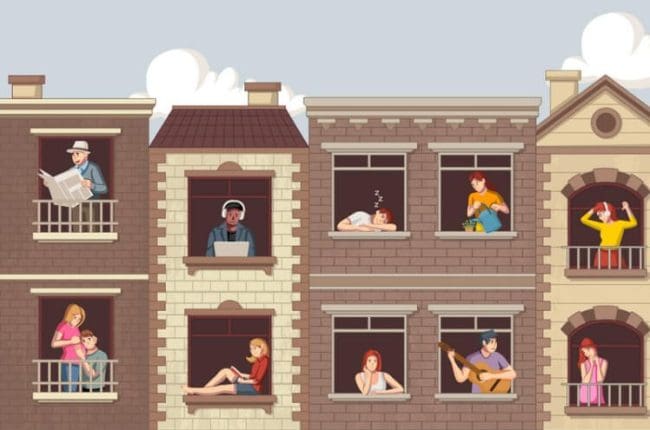Who do you think lives in apartments in our big cities? Are most other apartment dwellers just like you or are you somehow different from the mob?
Based on a study called Who Lives in Higher Density Housing, by UNSW City Futures Research Centre, apartment residents in Sydney and Melbourne can be divided into five major demographic groups.
These groups comprise the economically engaged, the young, jobless or under-employed, battlers and migrant families, older public housing tenants and over-60s established owners and downsizers.
The first group includes professionals in regular employment, paying rent or mortgages but with some disposable income for leisure and retail activity. According to UNSW researchers, they make up about half of our cities’ apartment dwellers.
This demographic has grown rapidly in recent years as apartment living has become more acceptable and attractive to middle-income 30somethings.
Add to them the downsizers and over-60s long-term residents, and there you have the glossy, soft-focus, balcony Chardonnay-sippers beloved of marketing materials.
However, that ageing demographic rump only constitutes about three per cent of the strata population, making their media profile well out of proportion with their actual presence in the community.
More significant by far are the strata poor (my term, not UNSW’s) who are, collectively, ageing housing commission singles, the young underemployed and (mostly) migrant battlers, who make up about 25 per cent of the strata population.
The latter two groups are more likely to be portrayed as the victims or perpetrators of strata ills such as over-crowding and antisocial behaviour. They are certainly unlikely to appear in advertising brochures.
Assumptions are made (always a danger) that they are living in barely tolerable conditions that they are desperate to escape, but lack the financial heft or knowledge to do so.
In an extract from architecture writer Elizabeth Farrelly’s upcoming book “Killing Sydney” she describes the horrors of living in a tiny apartment, with inadequate storage and zero privacy from nearby units and where the lifts periodically fail.
But you have to wonder if migrant battlers or the young underemployed feel so disappointed by their strata homes.
When you consider the plight of residents of, say, a 25-storey apartment block with no lifts in Chongquing, China, you might consider the possibility that people who have moved from deprived areas might be glad of lifts that worked more often than not.
That’s not to say we should lower our sights when it comes to planning, building or buying apartments. But while we wait for planners to move away from the “cram ‘em in, stack ‘em high” school of architecture, we should be smarter about what we can provide for the money that the bottom 25 per cent of the market can afford.
For instance, there’s a new style of boarding houses on the drawing boards of innovative architects all over Australia. These are studios where young singles and couples can have a private bathroom but share kitchens and laundries.
You would probably end up investing in the devloper rather than the individual units, but it is one growing part of the market.
But if you want an affordable investment apartment, in an area of high demand, find an older, solidly built, secure block, that’s well managed and maintained.
It doesn’t have to be luxurious –certainly not somewhere with a veneer of quality that’s ready to evaporate as soon as the two-year minor defects claim period expires.
And perhaps being overlooked by other blocks gives some people a sense of security rather than concerns about privacy.
Just choose somewhere where lower-income residents will aspire to live, rather than pray to leave, and you won’t go too far wrong.
And with apartment rents falling in Sydney as former holiday let flats flood the market, focussing on the people who might rent your property, rather than the price tag, could be the way to go.
A version of this column first appeared in the Australian Financial Review





If you want to start a discussion or ask a question about this, log into the Flat Chat Forum (using the link above). More people will read it there and you can more easily keep track of responses.